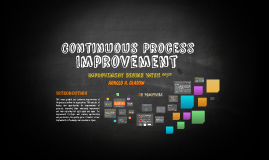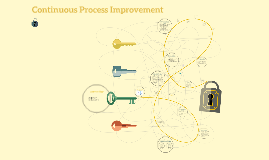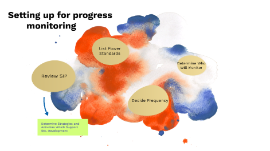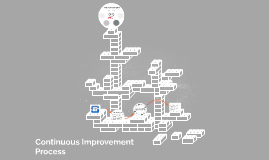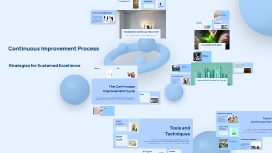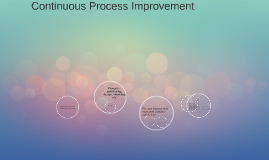Continuous Improvement Process
Transcript: Historical Development Key Principles The concept of continuous improvement traces its roots to early 20th century manufacturing practices, notably the Toyota Production System. Over decades, methodologies like Total Quality Management (TQM) and Lean have evolved, influencing industries globally and cementing continuous improvement as a fundamental business strategy. The key principles of continuous improvement encompass a commitment to quality, a focus on customer satisfaction, and the empowerment of employees. Organizations must foster a culture of feedback and learning, utilizing data-driven decision-making to identify and implement potential enhancements. Definition and Importance Industry Applications In healthcare, Virginia Mason Medical Center adopted lean principles to enhance patient care and streamline processes. This resulted in a 50% reduction in patient wait times, demonstrating how continuous improvement can significantly enhance service delivery across different sectors. Continuous improvement is defined as the ongoing effort to enhance products, services, or processes over time. This approach not only drives operational efficiency but also fosters innovation and adaptability, ensuring organizations remain resilient and competitive in a dynamic business landscape. Lessons Learned Successful Organizations Successful continuous improvement initiatives often emphasize the importance of employee engagement. Organizations that foster a culture of collaboration and feedback, like GE, often see increased innovation and higher morale, proving that employee involvement is crucial for lasting change. Toyota is a prime example of continuous improvement through its Toyota Production System, which emphasizes efficiency and waste reduction. The company has consistently leveraged this system to maintain its leadership in the automotive industry, showcasing the tangible benefits of continuous improvement in productivity and quality. Introduction to Continuous Improvement Continuous improvement is a systematic and ongoing effort to enhance products, services, or processes. It is crucial for organizations seeking long-term success and competitiveness in an ever-evolving market. Case Studies and Examples Analyzing real-world scenarios provides valuable insights into successful continuous improvement practices. This section highlights organizations that effectively implemented these strategies, illustrating the impact of continuous improvement across various industries. Continuous Improvement Process Measuring Performance Regular measurement of performance indicators helps organizations assess the effectiveness of improvement initiatives. Utilizing KPIs (Key Performance Indicators) and benchmarking against best practices enables teams to identify successes and areas for further development. Overcoming Resistance Strategies for Sustained Excellence Engaging Employees Do Check Engaging employees in the continuous improvement process leads to higher ownership and motivation. Techniques such as training, transparent communication, and involvement in decision-making can foster a sense of belonging and accountability among team members. Resistance to change is a common challenge in continuous improvement initiatives. Strategies to overcome this include communicating the benefits of change, involving employees in the process, and providing support throughout transitions to foster adaptability. During the Check step, assess the outcomes of the implemented changes against the set objectives. Use metrics and data analysis to evaluate success, identify any discrepancies, and understand the impact of the changes on overall processes. The Do phase involves executing the planned actions. This stage requires proper allocation of resources, training for staff, and actual implementation of the changes. It's critical to communicate effectively to ensure everyone understands their roles. Setting Objectives Implementing Continuous Improvement Clear and measurable objectives are essential for guiding continuous improvement efforts. Employ the SMART criteria (Specific, Measurable, Achievable, Relevant, Time-bound) to ensure that these goals effectively drive performance and align with broader organizational strategies. Effective implementation of continuous improvement entails setting clear objectives, engaging employees, measuring performance accurately, and addressing any resistance. These components are vital for cultivating a culture of ongoing enhancement in organizational processes. The Continuous Improvement Cycle Plan The Continuous Improvement Cycle is a structured approach to enhance processes and outcomes within an organization, emphasizing iterative refinement. It includes four distinct stages: Plan, Do, Check, and Act, ensuring that improvements are systematic and measurable. In the Plan stage, establish clear objectives and identify processes requiring improvement. Research and analyze data to create actionable plans






